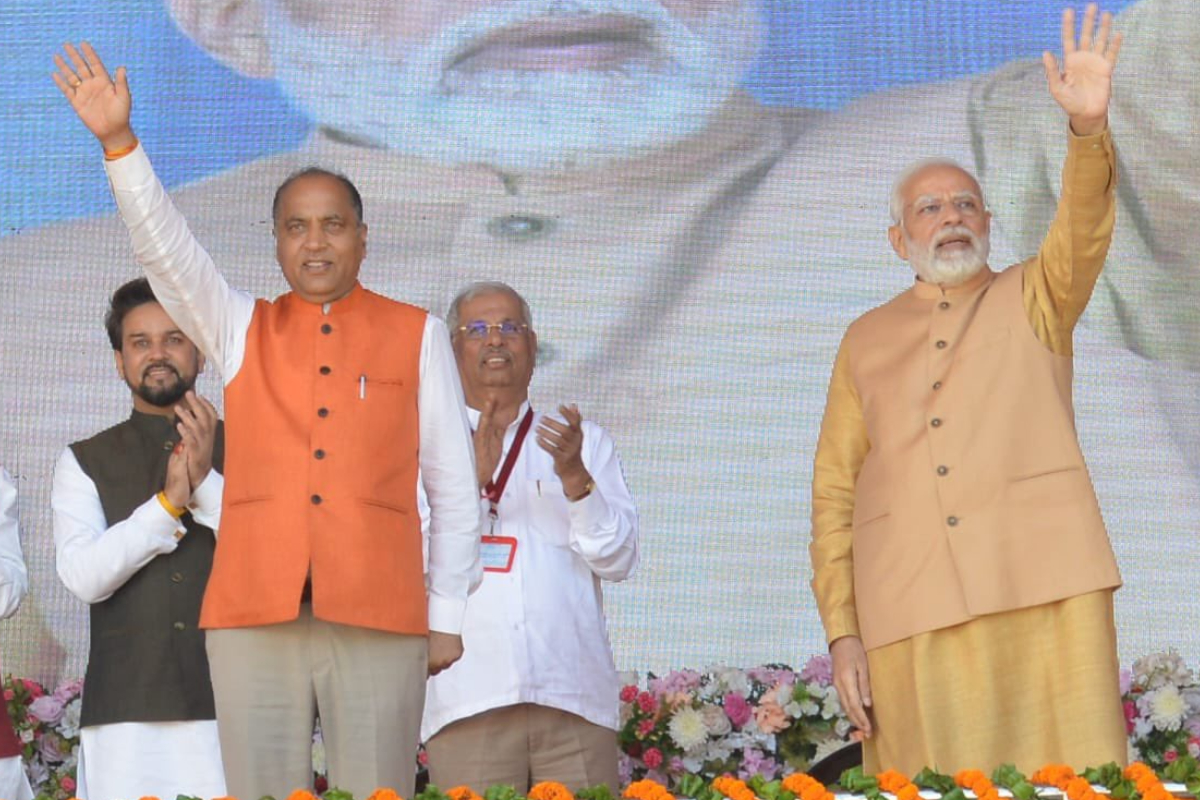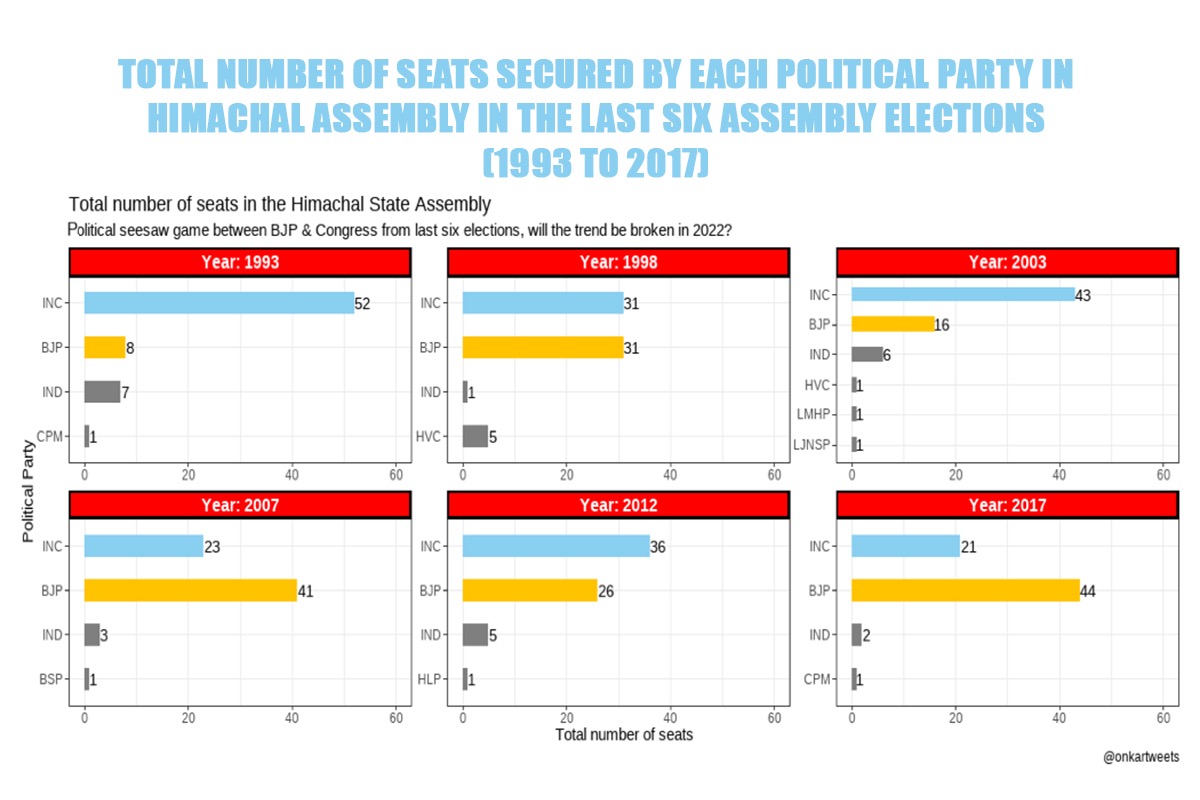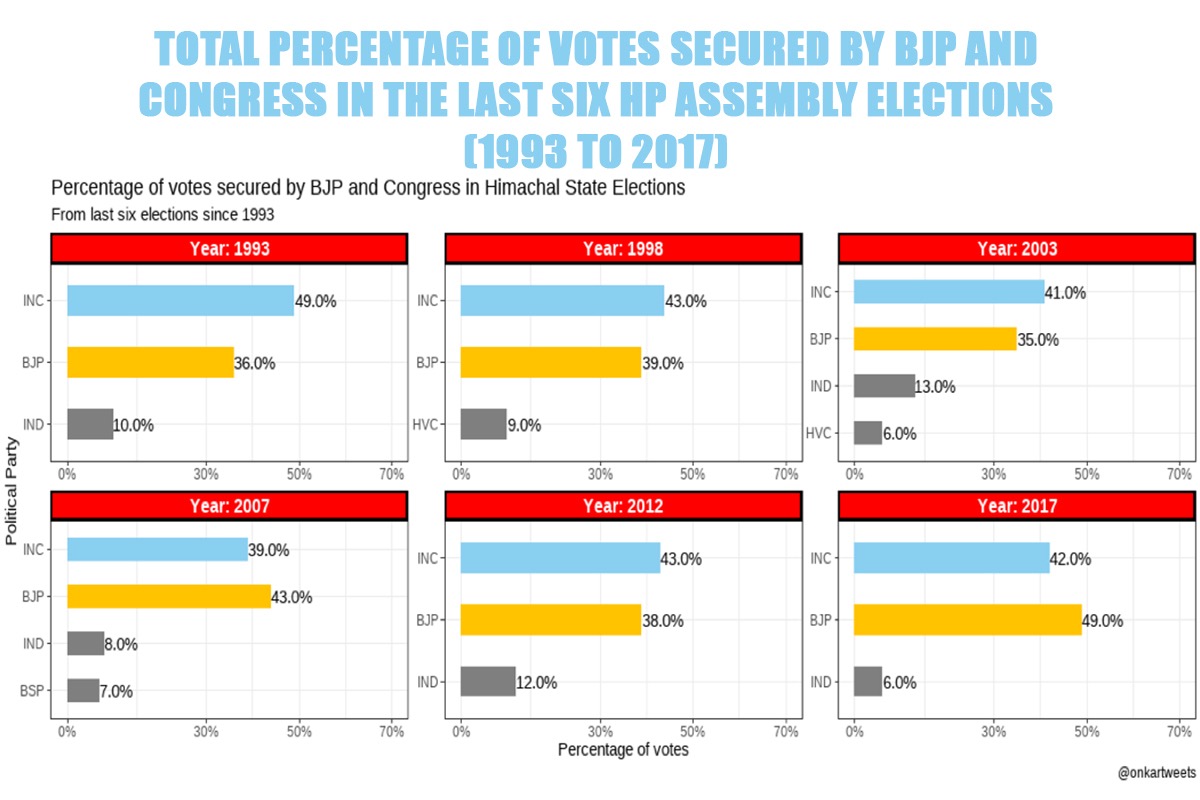Prime Minister Narendra Modi on Thursday blew the poll bugle in Himachal Pradesh after he laid the foundation stone of a bulk drug park in Una district. The Prime Minister also flagged off the Vande Bharat Express from Andaura in Una district to Delhi and dedicated the Indian Institute of Information Technology (IIIT)-Una to the nation. The Prime Minister then addressed two public rallies, thus setting the tone for the battle ahead for his party, the Bharatiya Janata Party (BJP).
Congress general secretary Priyanka Gandhi is also slated to address a public rally in Solan on Friday. Congress is banking on anti-incumbency and the Himachal voting pattern, which has not returned a government since the state assembly elections in 1993. The BJP’s top leadership is cock-a-hoop after it successfully retained government in Uttar Pradesh, which has seen different governments since 1990. Its poll managers are busy devising an aggressive poll campaign on the lines of Uttar Pradesh to beat the anti-incumbency if any.
Himachal Pradesh, besides being a crucial border state, has witnessed interesting voting patterns. It has been witnessing a see-saw battle between the Congress and the BJP. While BJP is banking upon the good governance and delivery of its poll promises, Congress and the new entrant Aam Aadmi Party (AAP) are trying to unseat the ruling party by offering freebies and alternative governance.
Let’s take a look at the issues on hand and the voting pattern of the voters of Himachal since 1993. Congress has lost its tallest leader and six-term chief minister Virbhadra Pratap Singh. Though his wife Pratibha Singh is the president of Himachal Pradesh, the exit of Himachal Pradesh Congress working president and former minister Harsh Mahajan has dented the Congress.
Mahajan was considered close to the late Virbhadra Singh, but his resignation from the Congress and joining the BJP is being seen as a major boost to the ruling party. Mahajan’s joining ranks with the BJP was the last thing that the faction-ridden Congress wanted. Mahajan alleged that nothing was left in the Himachal Congress after the death of Virbhadra Singh and its central leadership was directionless.
Himachal has seen a direct fight between the Congress and BJP for the last many decades. Both parties have had alternate chances at power since 1993. An assembly election is slated to take place in November 2022 to elect 68 members of the Himachal Legislative Assembly. During the last six assembly elections, the Himachal assembly had the highest tally of 52 Congress legislative members in 1993. In contrast, its tally was the lowest at 21 during the last assembly election, which happened in 2017.
The BJP had its largest-ever tally of 44 in the last assembly election and its lowest tally was six in 1993. The vote percentage of Congress has ranged from 39% (in 2007) to 49% (1993) whereas the vote share of the BJP has ranged from 35% (2003) to 49% (2017).
Buoyant by its stellar victory in neighbouring Punjab, AAP has entered into the fray in Himachal. Will it be able to make it a triangular contest? A good show by the AAP in the Himachal election will catapult it to become a national party, having already established itself in Delhi, Punjab, and to a limited extent in Goa (with less than 7% of votes and two assembly seats).
Based on voting patterns in previous elections, will the Congress reclaim power in Himachal, or will the Modi factor buck the trend in the BJP’s favor? The BJP has reposed faith in the current Chief minister Jai Ram Thakur, and is likely to project him as the CM’s face. Will the Congress be able to claim the legacy of its longest-serving Chief Minister, late Virbhadra Singh, after fielding Pratibha Singh (late Virbhadra Singh’s wife) as state Congress chief, despite her refusal to be declared the party’s CM face?
Both AAP and Congress have made a pre-poll promise of a monthly allowance of ₹1000 and ₹1,500 respectively, to all eligible women in the age group of 18 to 60 years, underscoring that women voters might hold the key in the poll-bound state. Many of Congress’s 10-point guarantees have imprints of AAP, including 300 units of free electricity to every household, free mobile clinics, and English-medium schools in each constituency.
The BJP, on the other hand, is relying on reaching out to the youth, women, farmers, and various communities, including SCs and STs, and making them aware of the achievements of the state and central governments, including various farmers’ welfare schemes, social security schemes, subsidised electricity to the poor, subsidised bus fare for women, and the way the government is focused on economic recovery in the state after the COVID-19 pandemic.
Youth unemployment due to COVID-19 impact on the state’s tourism sector, issues of apple growers and farmers, and welfare schemes for various sections of the electorate (women, SC, ST and pensioners) will be other key issues for the state election.











